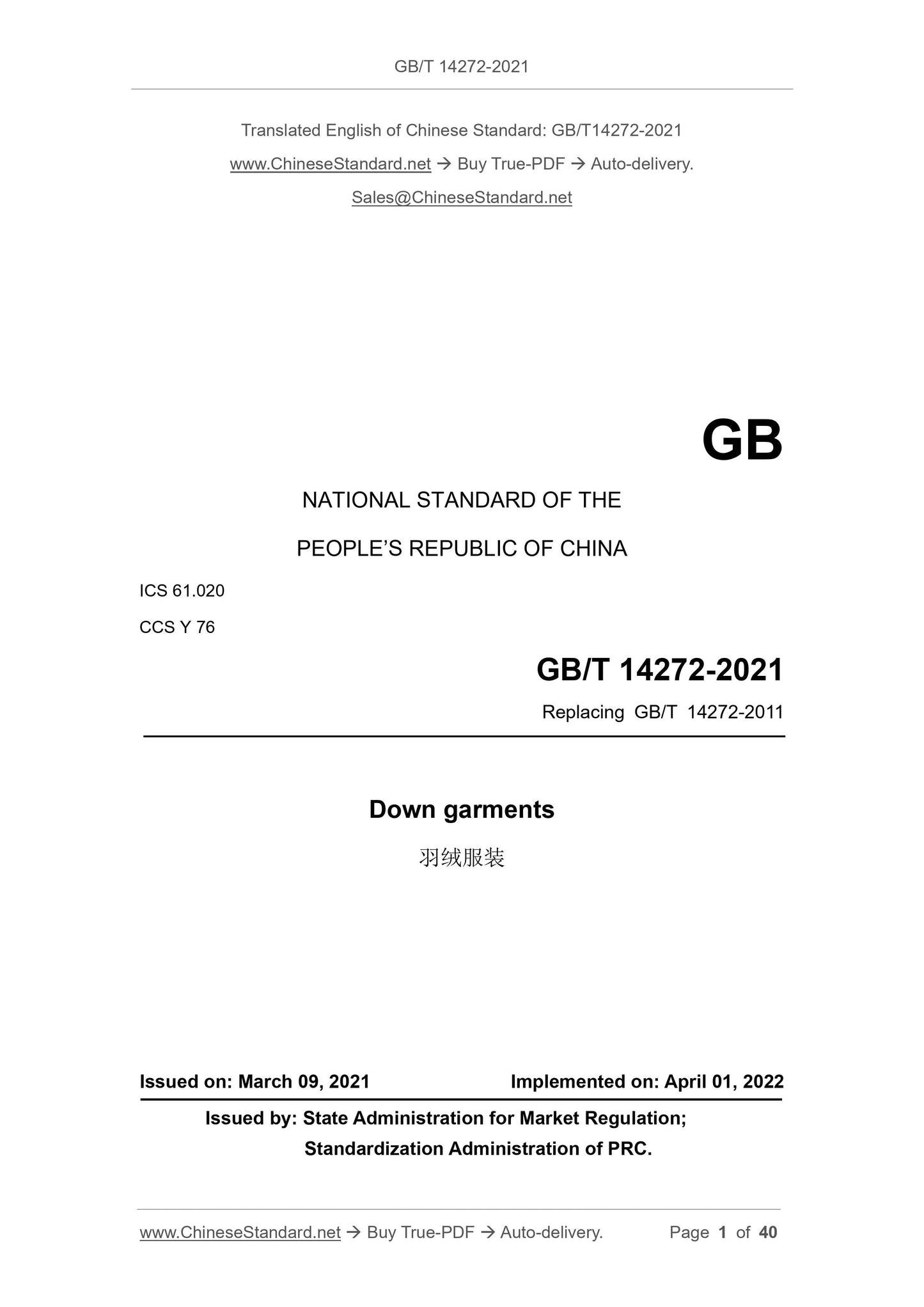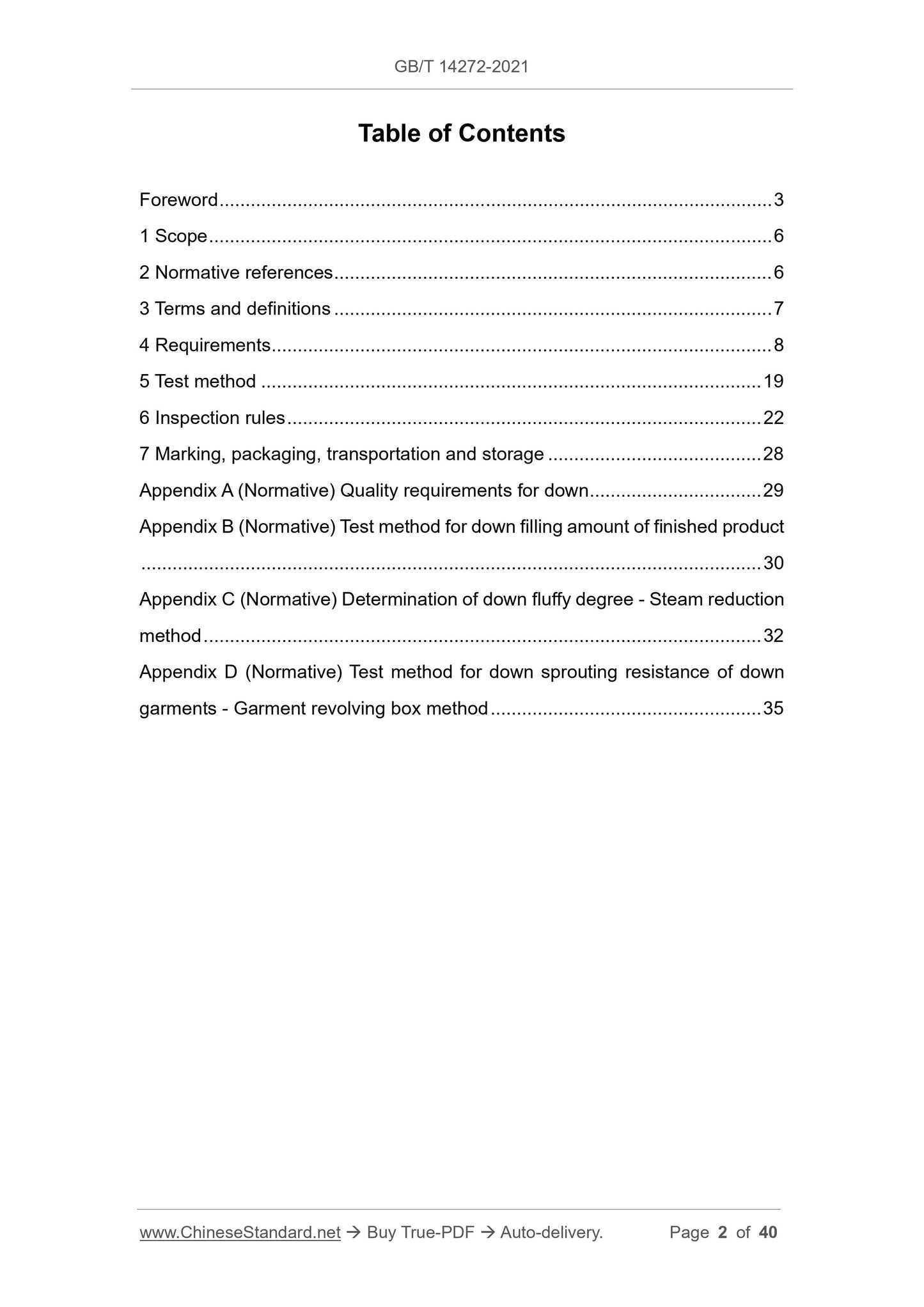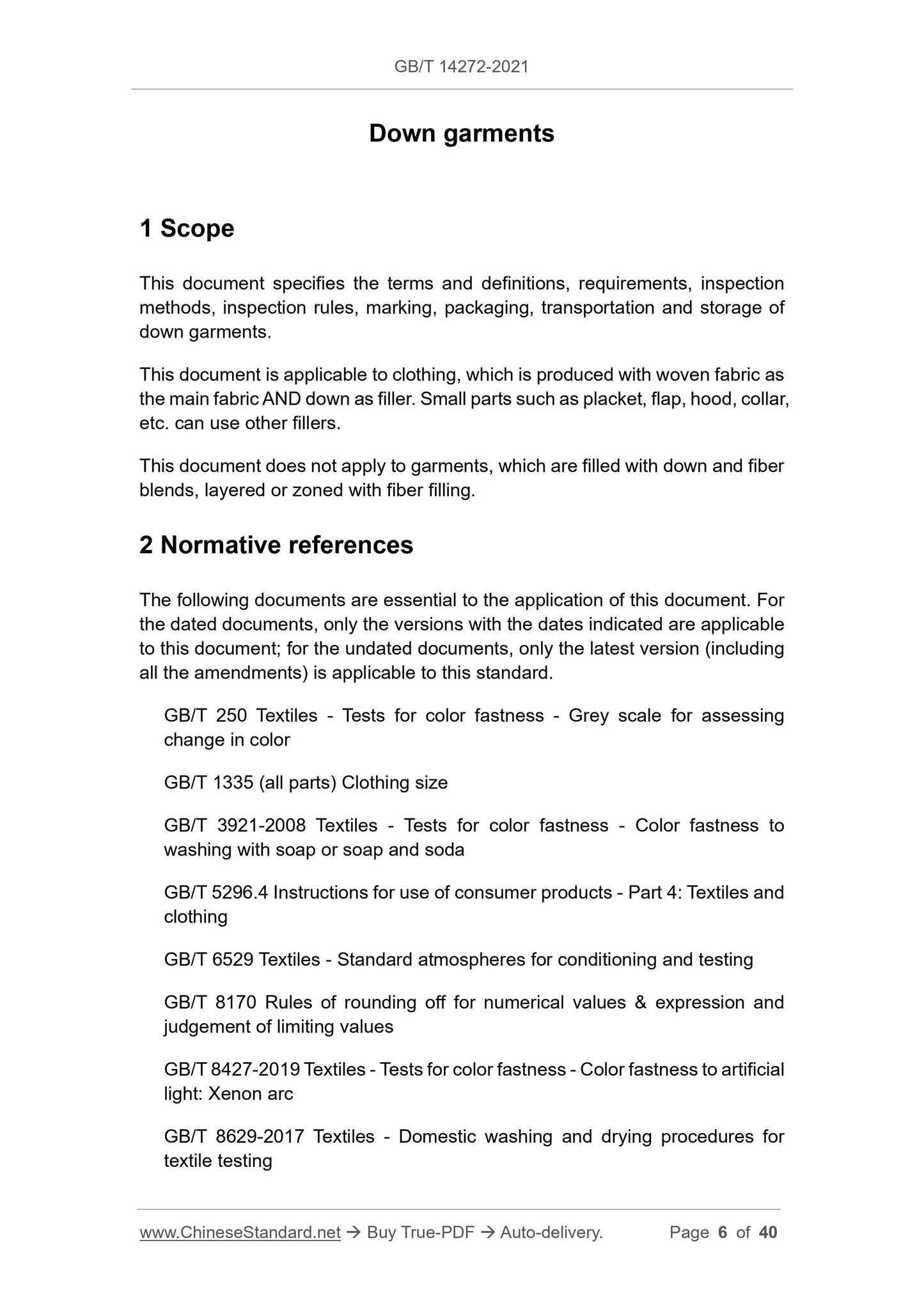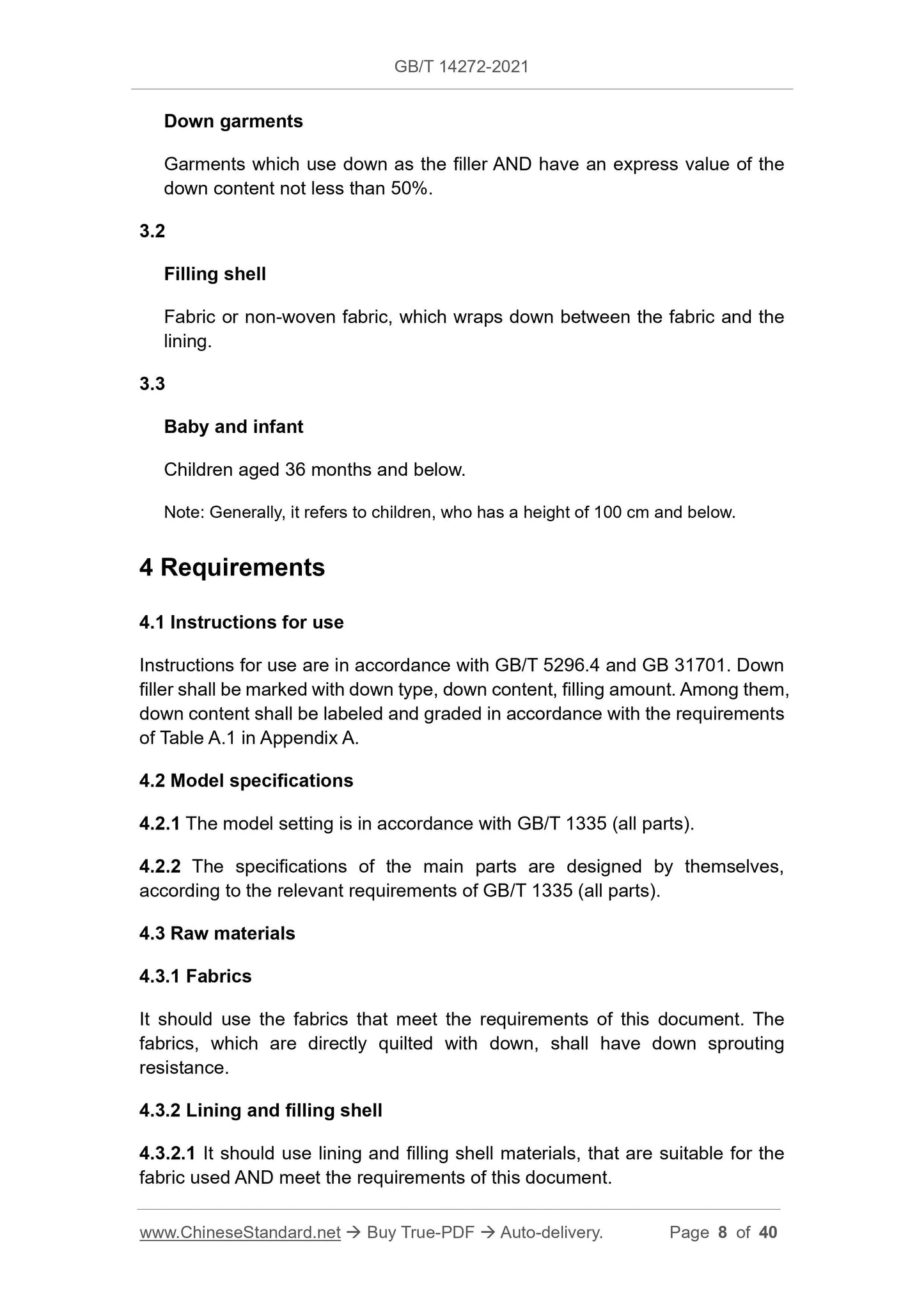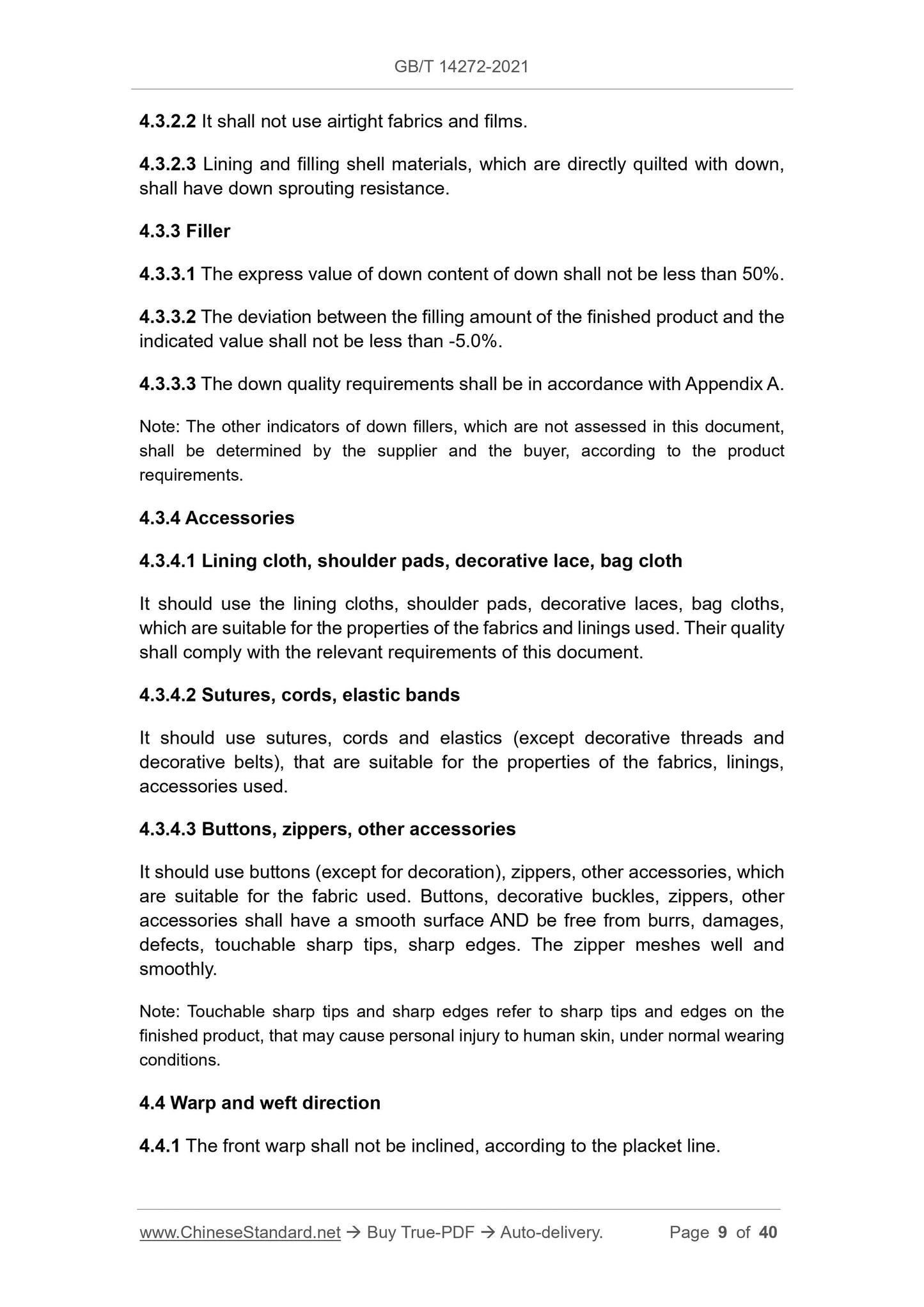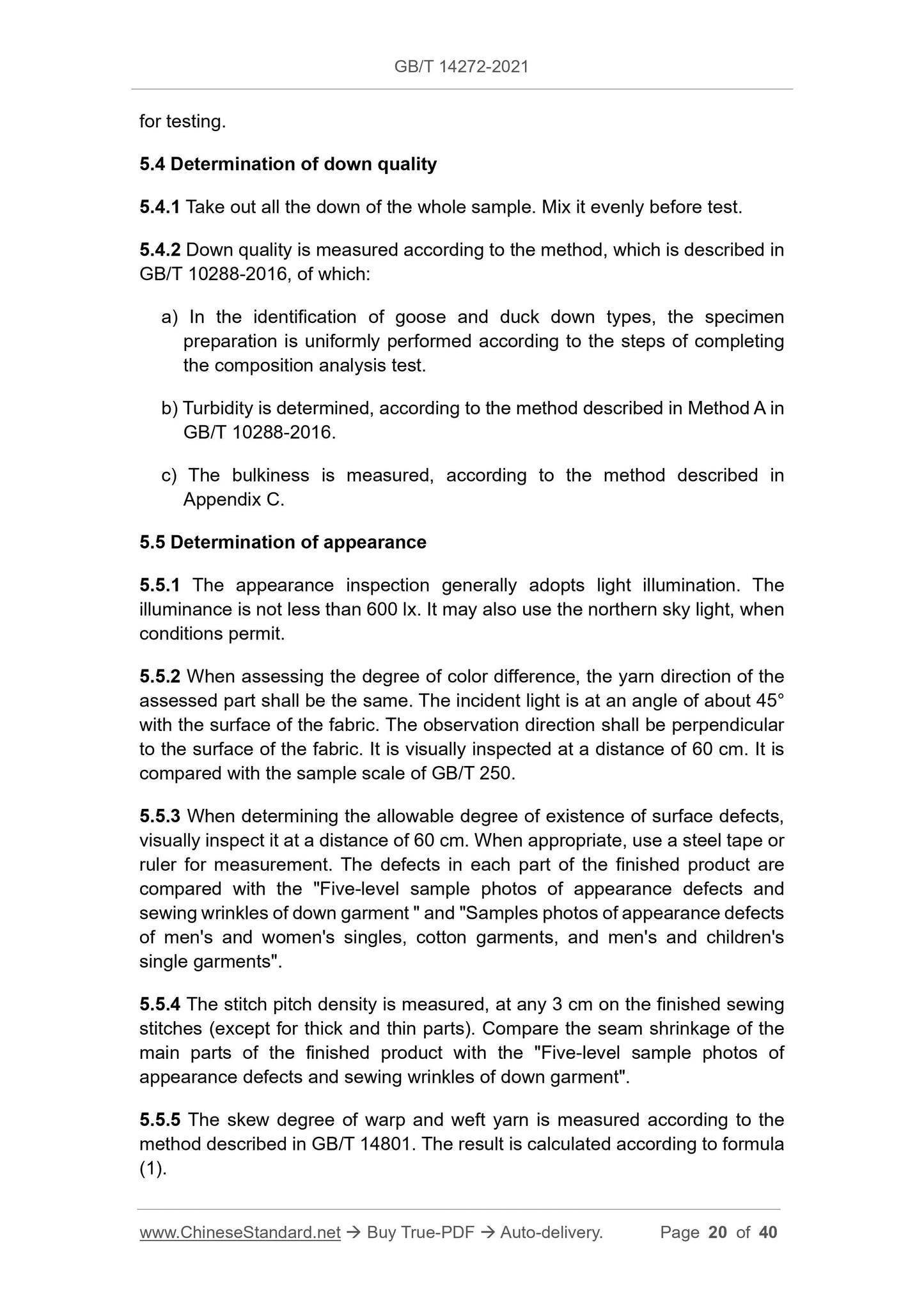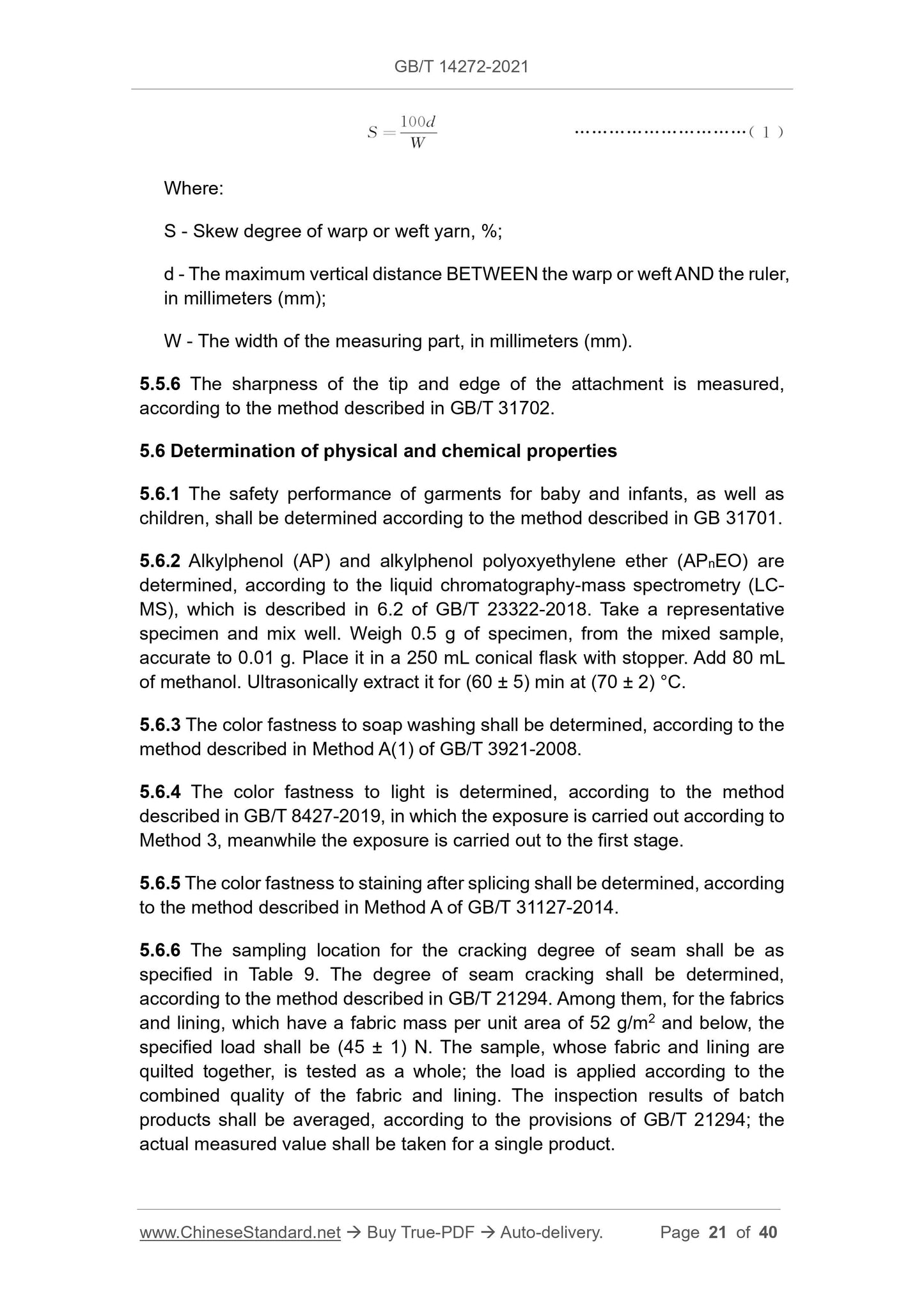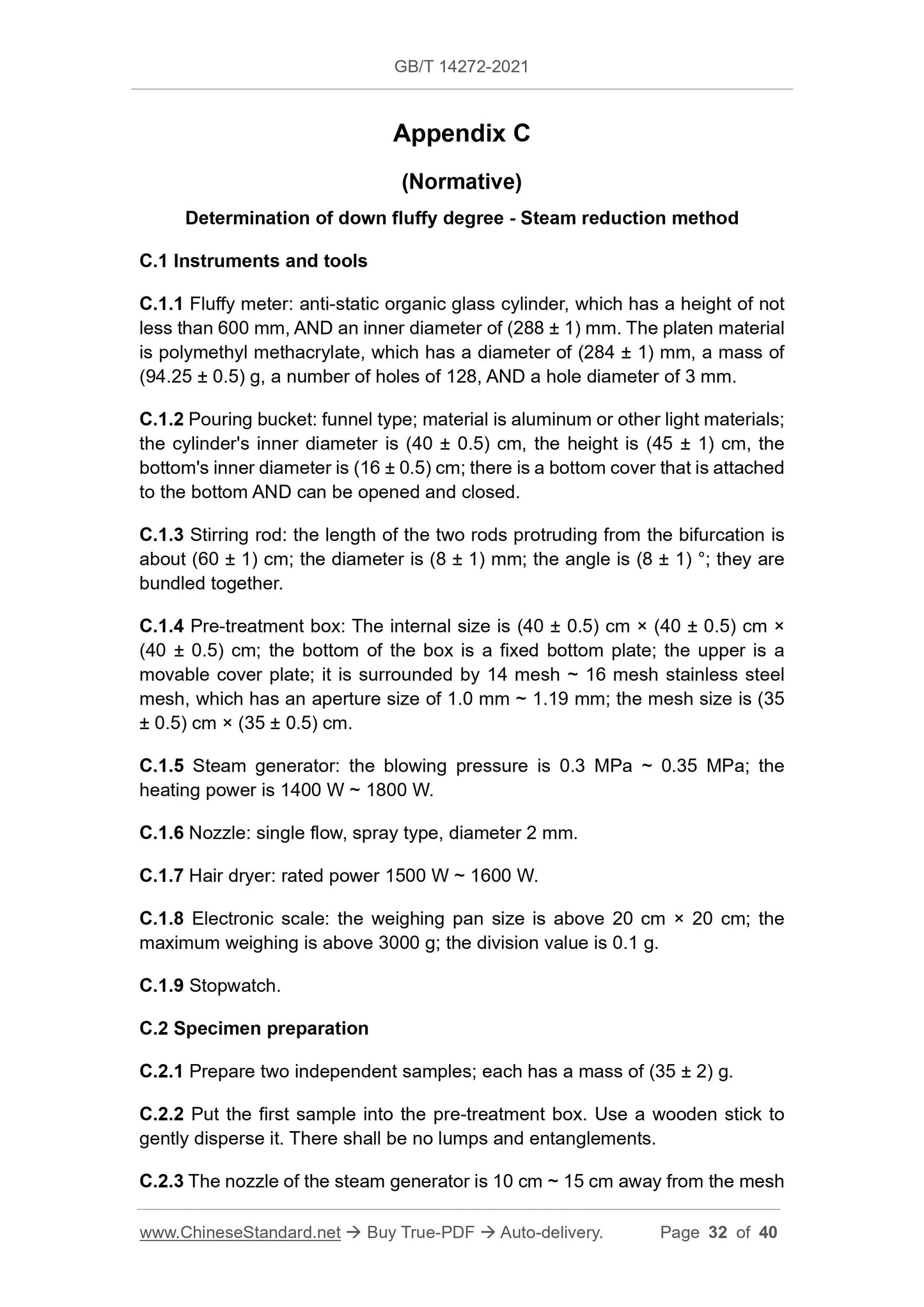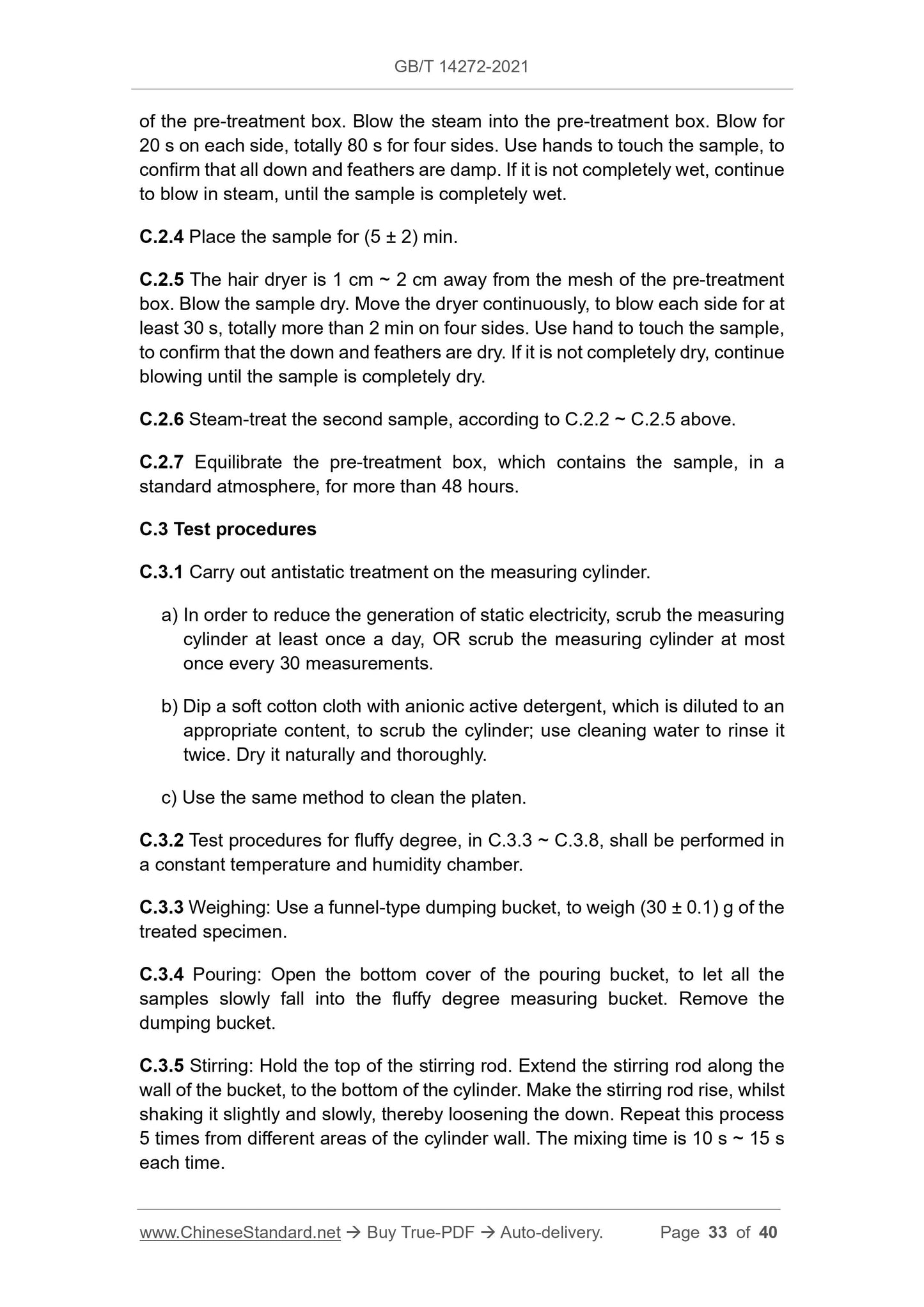1
/
of
9
www.ChineseStandard.us -- Field Test Asia Pte. Ltd.
GB/T 14272-2021 English PDF (GB/T14272-2021)
GB/T 14272-2021 English PDF (GB/T14272-2021)
Regular price
$295.00
Regular price
Sale price
$295.00
Unit price
/
per
Shipping calculated at checkout.
Couldn't load pickup availability
GB/T 14272-2021: Down garments
Delivery: 9 seconds. Download (and Email) true-PDF + Invoice.Get Quotation: Click GB/T 14272-2021 (Self-service in 1-minute)
Newer / historical versions: GB/T 14272-2021
Preview True-PDF
Scope
This document specifies the terms and definitions, requirements, inspectionmethods, inspection rules, marking, packaging, transportation and storage of
down garments.
This document is applicable to clothing, which is produced with woven fabric as
the main fabric AND down as filler. Small parts such as placket, flap, hood, collar,
etc. can use other fillers.
This document does not apply to garments, which are filled with down and fiber
blends, layered or zoned with fiber filling.
Basic Data
| Standard ID | GB/T 14272-2021 (GB/T14272-2021) |
| Description (Translated English) | Down garments |
| Sector / Industry | National Standard (Recommended) |
| Classification of Chinese Standard | Y76 |
| Word Count Estimation | 26,275 |
| Issuing agency(ies) | State Administration for Market Regulation, China National Standardization Administration |
Share
